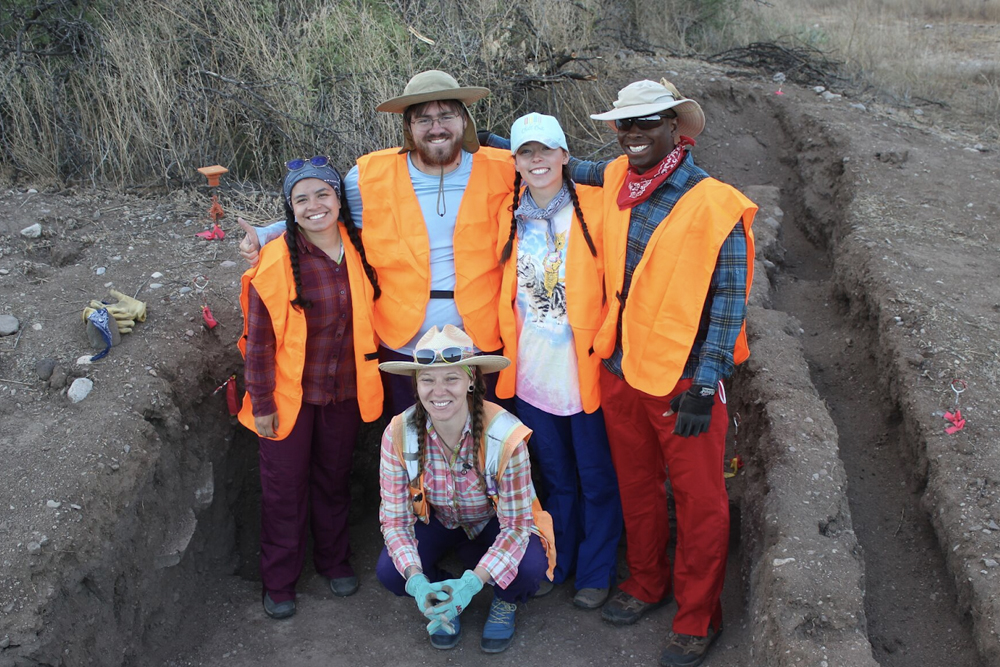Seniors Laura Rojas and Kimberly Campuzano spent this summer doing research in New Mexico and Colorado, respectively. On October 3, they gave presentations summarizing their experience and research to their audience in Blodgett Hall.

Adelphi anthropology students are known for their summers doing research in Crete with Professor Anagnostis Agelarakis, Ph.D., or in Alaska with Associate Professor and Director Brian Wygal, Ph.D. But seniors Laura Rojas and Kimberly Campuzano found their interests lay elsewhere and spent this summer doing research in New Mexico and Colorado, respectively. On October 3, they gave presentations summarizing their experience and research to their audience in Blodgett Hall.
“At Adelphi, we emphasize student research,” said Associate Professor Hanna Kim, Ph.D., chair of the Department of Anthropology.
Rojas spent six weeks learning more about the residents of a historical site in New Mexico. She received a National Science Foundation (NSF) grant that covered most of the costs.
With a group of specialists in lithics, ceramics and other fields, she studied the pottery of the residents. They searched through the soil for artifacts and disturbance by people and animals to determine where residents obtained raw materials for tools and how they utilized local plants and animals. The team also visited the densest and most exceptional concentration of pueblos in the American Southwest at the Chaco Culture National Historical Park. To earn the trust of the surrounding community, Rojas and her colleagues created colorful project boards summarizing their work. “We wanted the people there to know who we are and what we were doing, so we came up with fun ways to interact with them,” said Rojas, describing how researchers held arrow-shooting competitions so residents could reenact hunting expeditions and thus feel engaged in the researchers’ work.
“I’m so grateful I was able to do this,” said Rojas, adding that it was “one of the most fun experiences I’ve had.”
Campuzano went to Colorado to research a Japanese internment camp that housed Americans of Japanese ancestry who were forced to relocate to these camps after Japan attacked Pearl Harbor in 1941.
At the Amache Archaeology and Heritage Management Field School, Campuzano worked with students from other universities to study the soil for clues about the residents of the camps. There was also a museum component at the Amache Museum, where students learned about Japanese culture.
Campuzano shared pictures of a koi pond the residents built as a way to bring their Japanese culture with them when they were interned. Researchers found artifacts such as a cuplike item, found not far from the site, that could have been used for bathing.
“The work connected to an actual person, which made it meaningful,” said Campuzano. “I became part of a larger community. I feel more certain in my career.”
For further information, please contact:
Todd Wilson
Strategic Communications Director
p – 516.237.8634
e – twilson@adelphi.edu